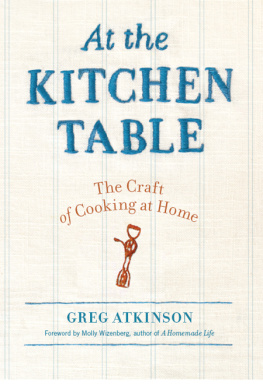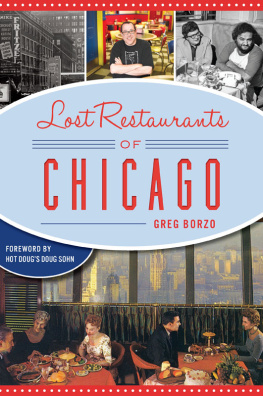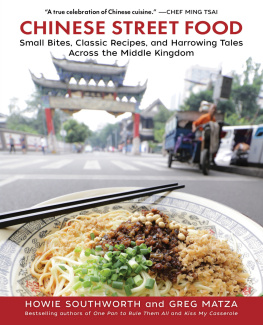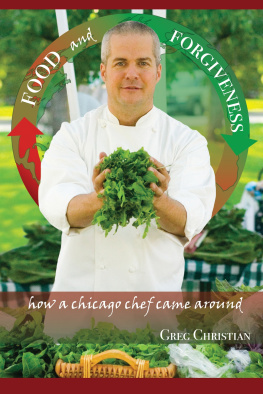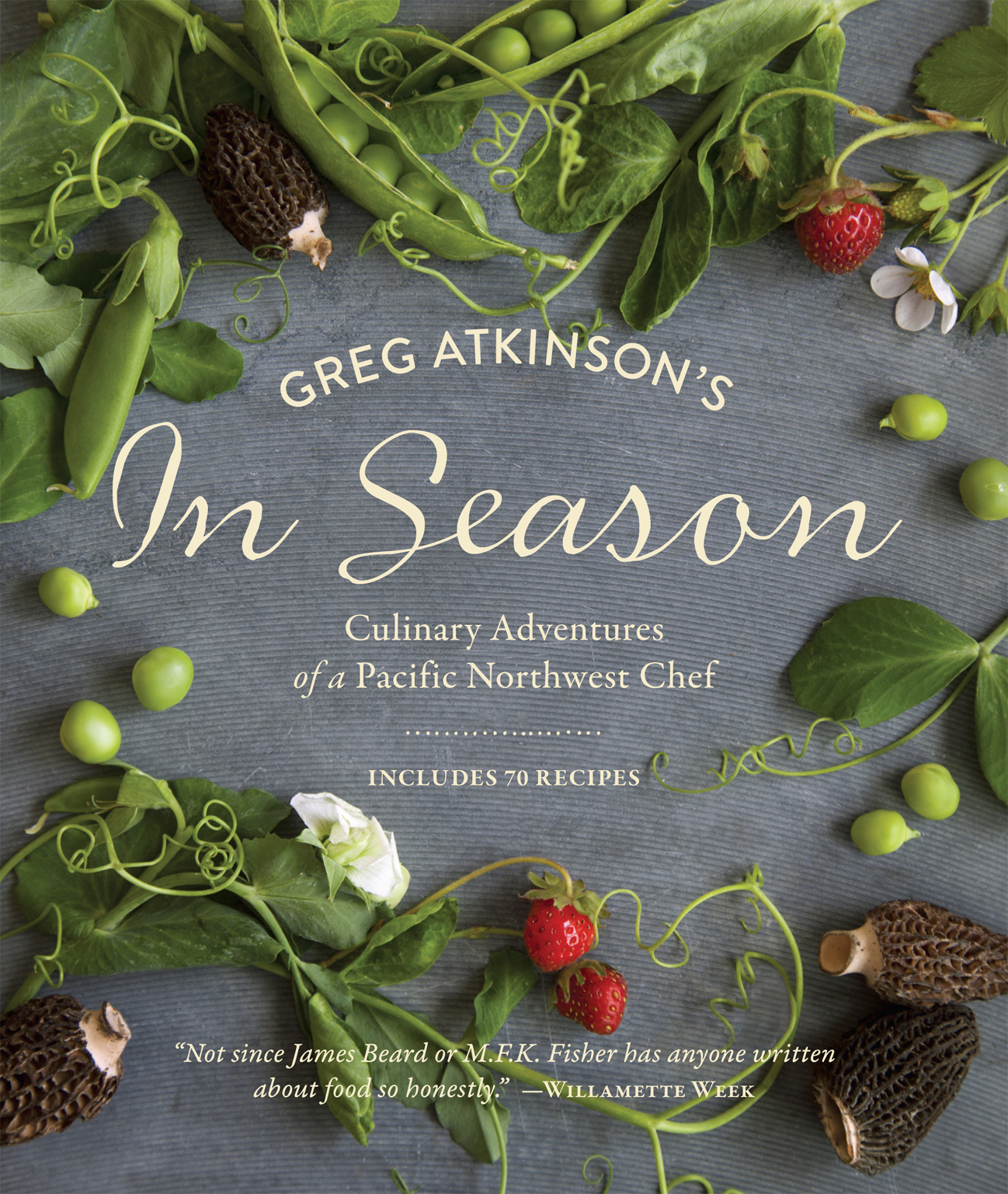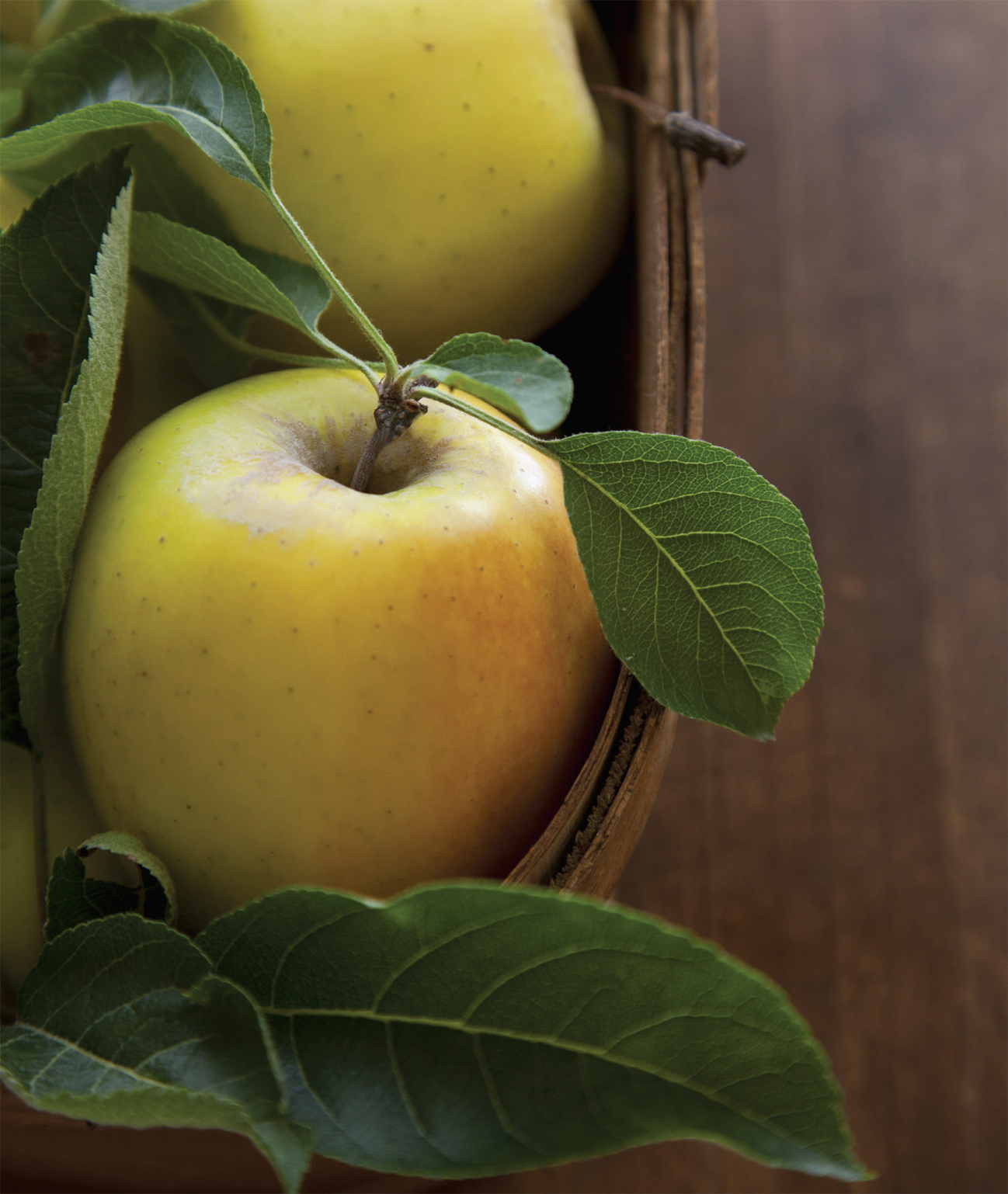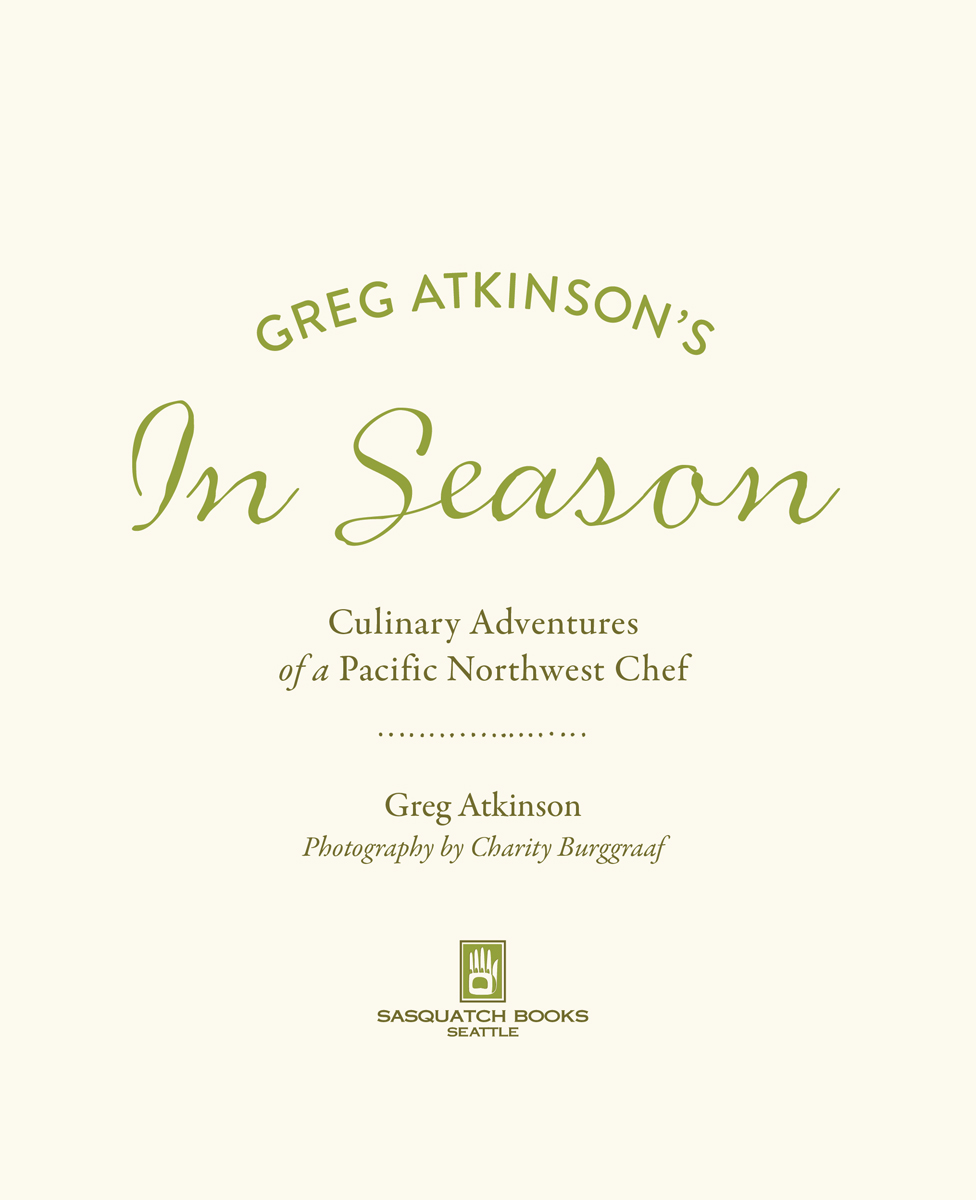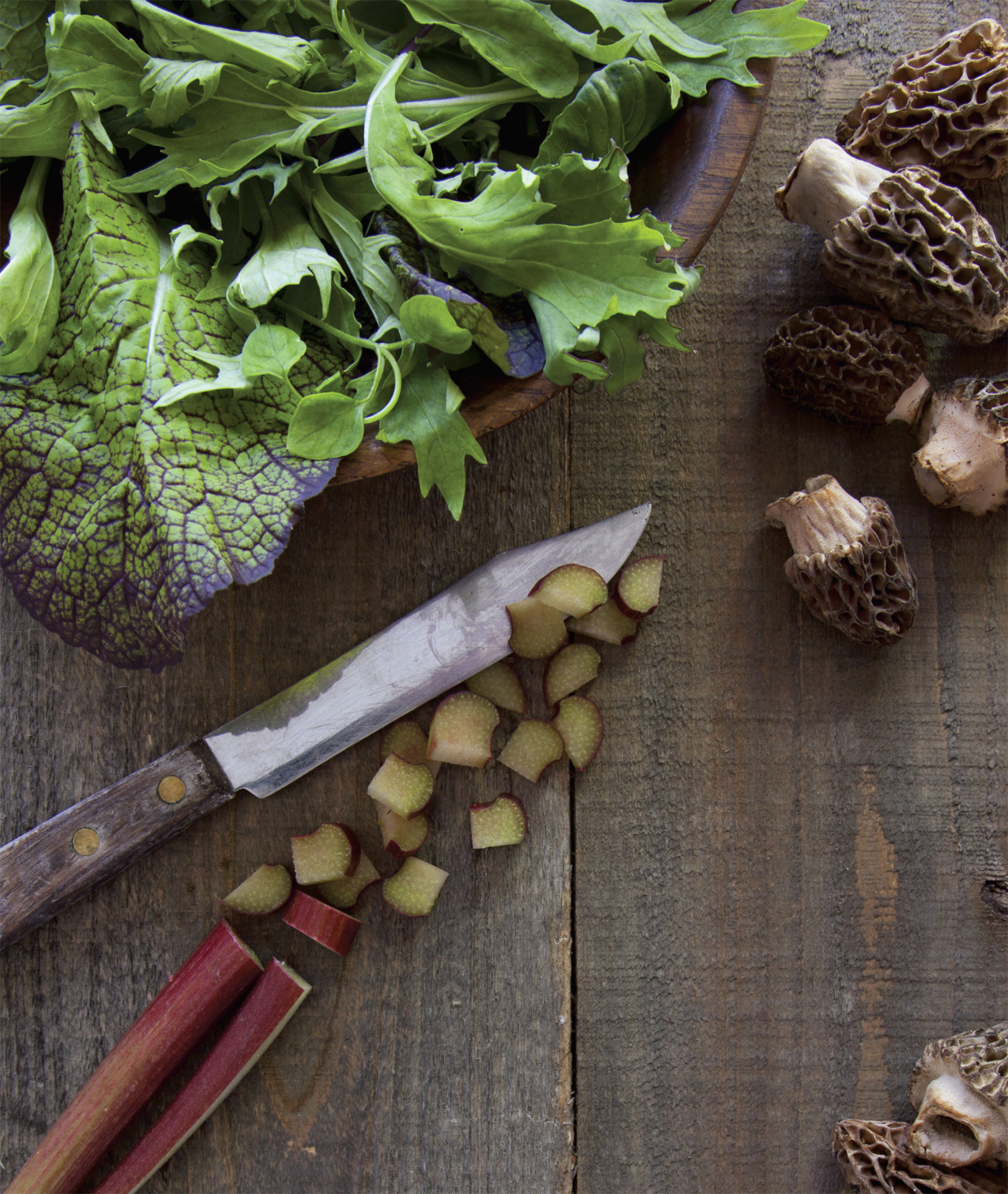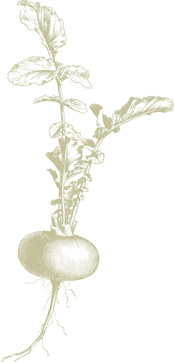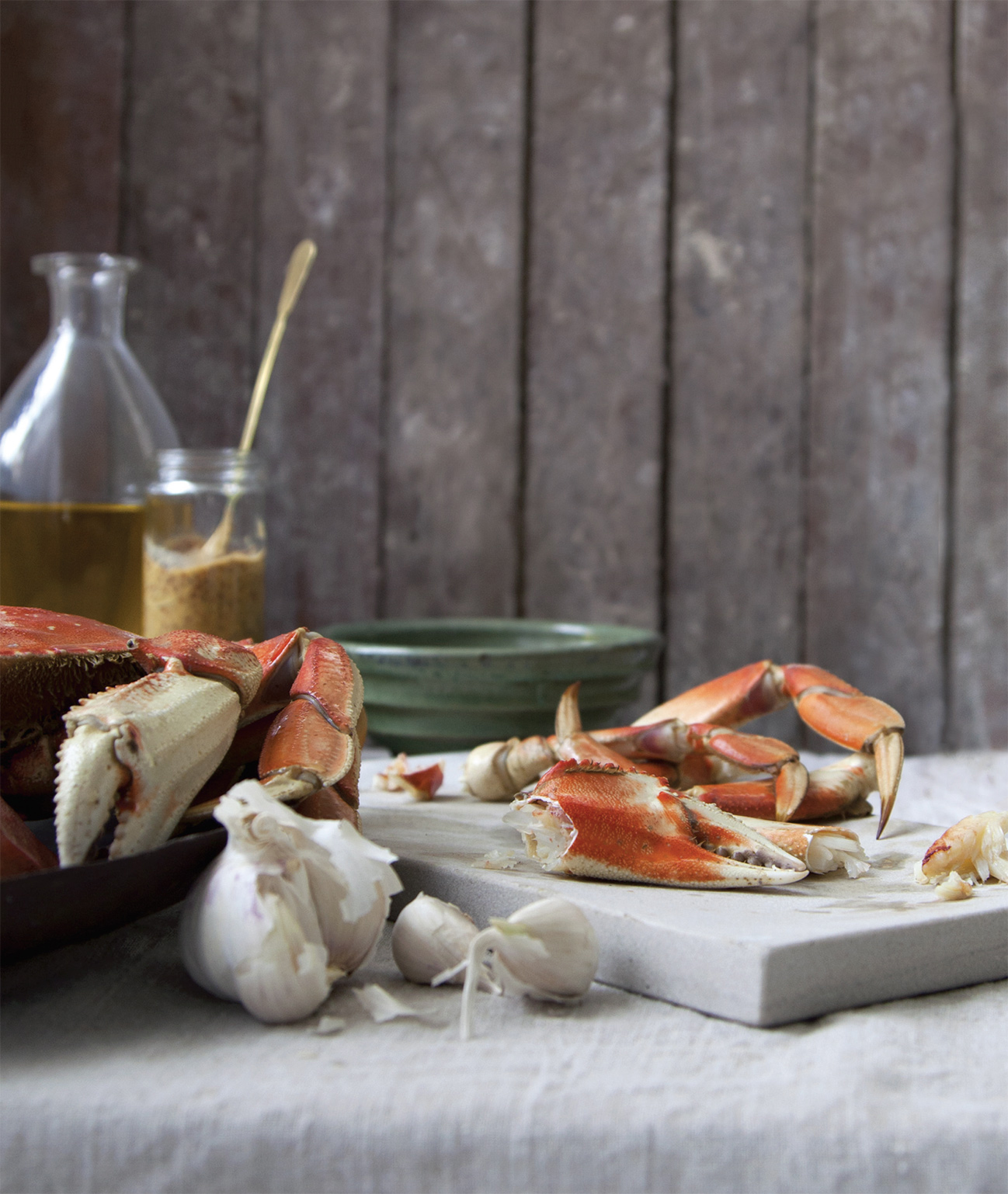Copyright 1997, 2014 by Greg Atkinson
All rights reserved. No portion of this book may
be reproduced or utilized in any form, or by any
electronic, mechanical, or other means, without the
prior written permission of the publisher.
Published by Sasquatch Books
Editor: Gary Luke
Project editor: Nancy W. Cortelyou
Design: Anna Goldstein
Photography: Charity Burggraaf
Library of Congress Cataloging in Publication Data
is available.
eBook ISBN: 978-1-57061-917-5
ISBN: 978-1-57061-916-8
Sasquatch Books
1904 Third Avenue, Suite 710
Seattle, WA 98101
(206) 467-4300
www.sasquatchbooks.com
v3.1
For Betsy
Contents
Recipes
Preface
W HEN I N S EASON FIRST APPEARED in the fall of 1997, few people had ever heard of a culinary memoir, least of all myself, the author. The book was not originally intended as a memoir; it was a collection of essays about food, originally written as columns for the Journal of the San Juan Islands, the paper of record for a small community of island dwellers living off the northwest coast of Washington. But in the decade that followed the books publication, this genre of food writing expanded into a category that created a perfect context for In Season. Now, personal essays are a vital component of most good food writing, and In Season fits into the body of New American Food Writing nicely.
The columns were written over a period of ten years during which my wife, Betsy, and I worked in restaurants on San Juan Island; foraged for wild greens, shellfish, and forest mushrooms; gave birth to two sons; and bought our first home. The thirty-five essays describe not only what we cooked and ate, but also how we lived, and how we felt about the people, the places, and the food that prompted the recipes.
In retrospect, those days seem almost too good to have been real, and, while the intervening years have been rich and productive, no period in this writers life has been quite as meaningful or as magical as that time was. I was developing my skills as a chef, learning to be a husband, father, neighbor, and citizen in a small town. And like my take on everything then, my youthful perspectives on many of the ingredients and combinations were fresh, unclouded by overlaying years. Everything was fresh, everything was new.
When I read these essays today, the man I was then reemerges. And perhaps more importantly, the dishes we cooked and ate come vividly back to life; I recall my first taste of rhubarb and ginger combined, or I taste again with dazzling clarity the juxtaposition of sharp, ripe, fragrant raspberries against the earthiness of wild summer salmon. Some of these dishes are reflected in the food I cook today at my own restaurant, which is modeled shamelessly after the small caf I write about in the book. Others are nostalgic reminders of dishes I seldom make now, but happily revisit in the memories evoked by these stories and recipes.
If anything has changed, it would be the way I use tools and techniques. While I once defended the use of old knives and inferior tools, I have turned more and more toward professional methods and equipment. Slicing an onion is just more fun with a crazy-sharp, fancy steel blade on an ergonomically designed handle; the high-tech German combi-oven I now use and the high-end Wood Stone grill in my restaurant kitchen are worlds away from the electric range and the backyard barbecue. It may seem ironic that it takes high-end equipment to recreate dishes first prepared on those rudimentary appliances, but it does. In order to conjure the precision and honesty of those dishes and reproduce them consistently for the public, I need focused and powerful tools.
At the end of the day, the past, as reflected in this book, is every bit as immediate and as much a part of today as tomorrow is. And revisiting the past serves as a reminder that time might not be as linear as we think. Just like the seasons, years seem to roll in cycles; childhood flows seamlessly into adolescence and adulthood. In the service of partnering and parenting, we ourselves are molded and shaped so that experiences become a part of who we are, and when those experiences are culinary, the food we eat becomes a part of us too.
The ripening blackberries, I wrote, remind me that time is possessed of a current, that we are all caught up in it, and that none of us will be here forever. And that is the case. Some of the people who appear in the book are no longer with us, and while the ingredients are still the medium that I work with every day in a different kitchen on a different island, my own ability to see the ingredients with the innocence and insights of the young man I was might have abandoned me. But the essays and recipes in this book keep my younger self alive.
G REG A TKINSON
Bainbridge Island, September 2013
Finding Myself in the Kitchen
AN INTRODUCTION
I HAVE ALWAYS COOKED PRIMARILY to please people, and so my cooking has always reflected the tastes of the people for whom I have cooked. When I was a child, learning to cook for my own amusement, I made sweets for after-school snacks. I quickly learned that if anything was more gratifying than something good to eat, it was getting praise for providing something good to others. There were a few embarrassing attempts to impress my friends and family with fancy dishes that no one understoodleast of all myselfbut over time, I developed the realization that the food that pleases people most is simple food.
When I first got to college, the work study director greeted me with, Im glad youre here. They really need someone in the cafeteria. So much for any dreams I had harbored about earning my tuition by quietly shuffling around the library. For the next two years, I scraped plates, ran the dishwasher, scrubbed pots, and hosed down garbage cans; occasionally, when I was all caught up, I was allowed to cook a little. Compared to dishwashing, cooking seemed glorious. It was so clean, so creative, and best of all, it made people happy.
My involvement in school waxed and waned over the five years that followed, but my devotion to cooking was constant. At any restaurant where I workedand there were a number of themI found free food, a warm kitchen in a cold city, and a surrogate family in the crew.
I cooked for comfort, for escape, and to satisfy a creative impulse. I discovered home-canning and preserving, and raided blackberry patches and abandoned orchards to gather fruit for my kitchen projects. At school, I studied microbiology and small group dynamics. At home, I grew sourdough starter and made blackberry wine. I ate and drank with small groups of coworkers. When I finally graduated, my girlfriend and soon-to-be fiance persuaded me to come to San Juan Island, where we could spend a few months in her parents summer home and think about our future.


